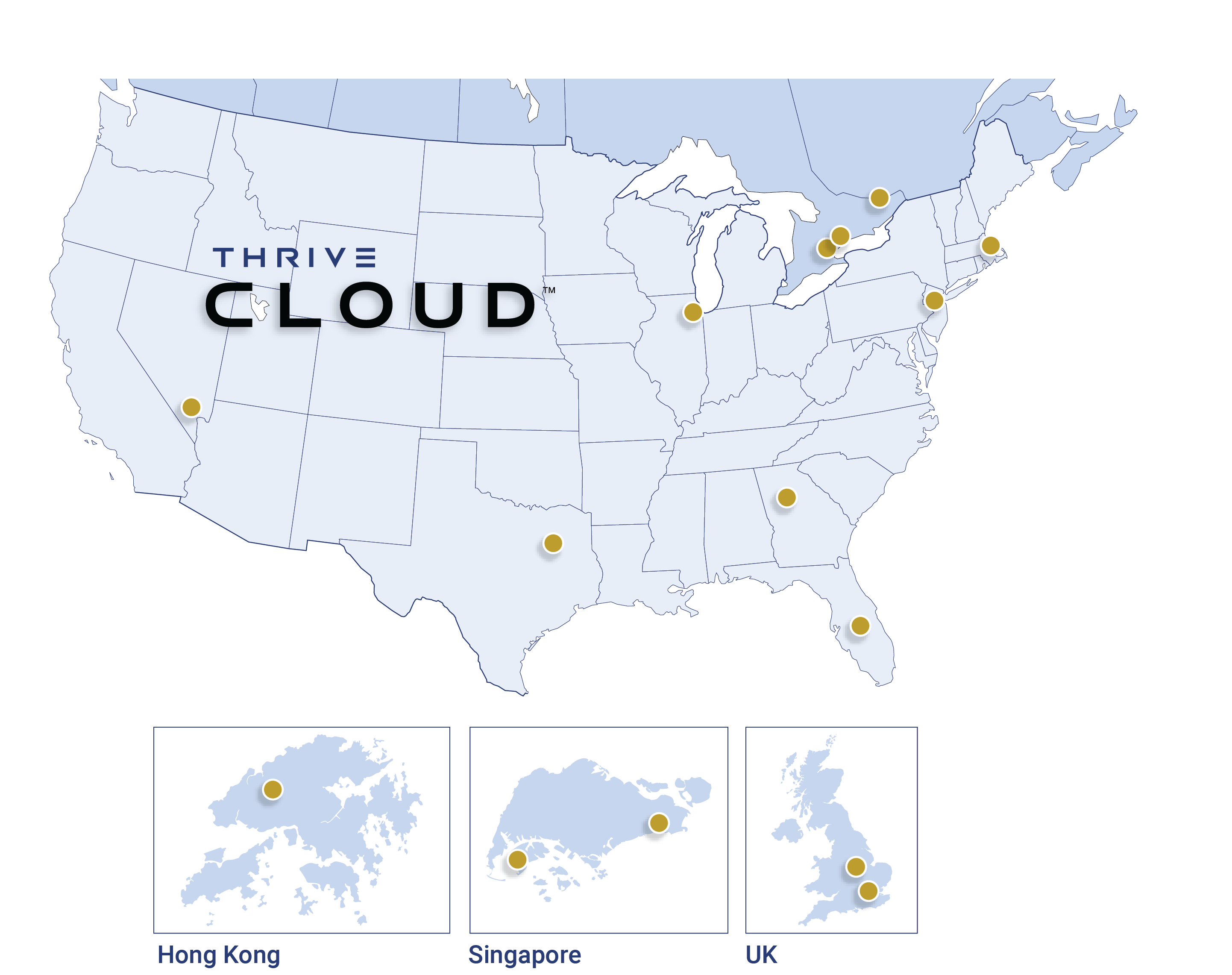Colocation
Thrive Managed Colocation Services
You are likely to be well on your journey to the cloud, but what about those applications that are not cloud-ready, or where there is a reluctance to place them in a public cloud? You now face disproportionate expense to keep these on your premises and the ROI of moving to a Co-Lo is more attractive than ever before.
The challenge is finding a Co-Lo service provider that can become an extension of your own facilities and a partner that can be an extension of your IT team. You want guaranteed reliability and security; you need flexibility, not rigid lock-in, and you want more than just rack space – you are looking for a personalized service that meets your needs.
That’s why Thrive, a leading colocation provider, has purpose-built data centers worldwide, ready for you to use as your private cloud estate, or as part of a diversified hybrid set-up.
Ready to Speak with Our Experts?

Global Data Center Locations
World-class SOC 2 Type II certified data centers around the world, including:
- Atlanta, GA
- Boston, MA
- Chicago, IL
- Dallas, TX
- Hong Kong
- Las Vegas, NV
- London, UK (2)
- Markham, Canada
- Montreal, Canada
- North Bergen, NJ
- Singapore (2)
- Toronto, Canada
- Winter Haven, FL
Key Benefits of Thrive Colocation
- COST REDUCTION – You remove the costs of real estate, power, cooling, and security associated with keeping your equipment on-premises. You benefit from our economies of scale and modern efficient facilities provided at a predictable monthly cost.
- RESILIENCE – We have the scale to provide the greatest level of resilience with a guaranteed 100% uptime complemented with fully redundant connectivity options.
- SECURITY – You have the peace of mind that your equipment is secure with our ISO27001 managed facilities, SOC certification, and all of the capabilities to secure physical and cyber access.
- AN EXTENSION OF YOUR FACILITY – We want you to call our facility home; you have access at any time and can use our staging lab, meeting rooms, and hot-desks when required.
- PART OF YOUR VIRTUAL TEAM – We provide you with much more than a space. Our team works closely with you to augment your resources and provide the on-site assistance you need, when you need it.
Colocation You Can Trust
Our managed colocation services offer the secure facilities and expert staffing you require, ensuring seamless integration to maintain your existing business applications. Thrive is the right colocation provider to deliver the proven reliability and “five 9’s” availability you demand.
Because Thrive is a full-service managed IT services provider and not just a data center operator, we also offer the flexibility to scale and adapt as your business continues on its journey away from self-hosted IT infrastructure to a potential Cloud-based future. Colocation offers a great first step in the process and enables critical applications that cannot be moved to the Cloud to still be managed and protected by the same team that maintains the private Thrive Cloud.
Contact Us Today to Discuss Your Colocation Needs
Thrive’s data center experts can offer valuable guidance on how your organization can best leverage colocation to improve business performance
Contact Us